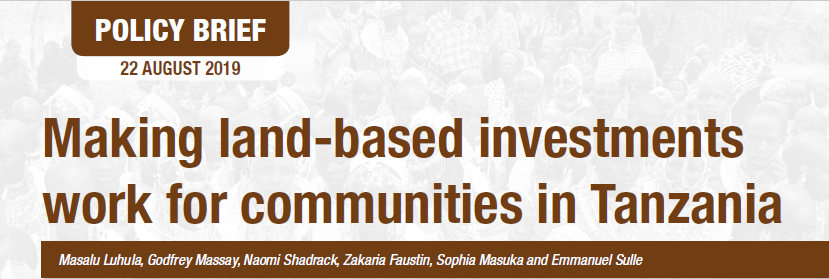The AU and FAO Voluntary Guidelines: What lessons do they offer to improve governance of tenure of land and forests in Tanzania?
Summary
Between 2005 and 2009 the emergence of large-scale acquisitions of land or ‘land grabbing’ for production of food and energy feedstocks, and private forest plantations in developing countries, triggered various responses from global actors. Some key responses were the introduction of the African Union Framework and Guidelines on Land Policy in Africa (AU F&G) in 2009, followed by the United Nations Food and Agriculture Organisation Voluntary Guidelines for the Responsible Governance of Tenure of Land, Forests and Fisheries in the Context of National Food Security (FAO VGs) in 2012. Both the AU F&G and the FAO VGs advocate for well-articulated land reforms in developing countries. The former emphasizes the need to ensure that the ongoing land reforms in Africa, most of which are pro-market solution, do not jeopardise the rights and access of vulnerable groups such as women, indigenous communities and youth, and that these groups are not adversely affected by expensive right transfer systems.
From the outset, the aim of the FAO VGs has been to achieve food security for all and support sustainable efforts towards eradication of hunger and poverty. They are intended to secure sustainable well being, environmental protection and socioeconomic development. Currently, the AU F&G and FAO VGs are at different stages of implementation in different countries. The key question now is how can Tanzania adopt these guidelines to ensure equitable participation of the population in land-based investments while addressing land-based conflicts? To realize this, the government must publicize these guidelines, particularly to the users of natural resources (land, fisheries and forests) and incorporate them into national legislation.
| Attachment | Size |
|---|---|
| 3.43 MB |

